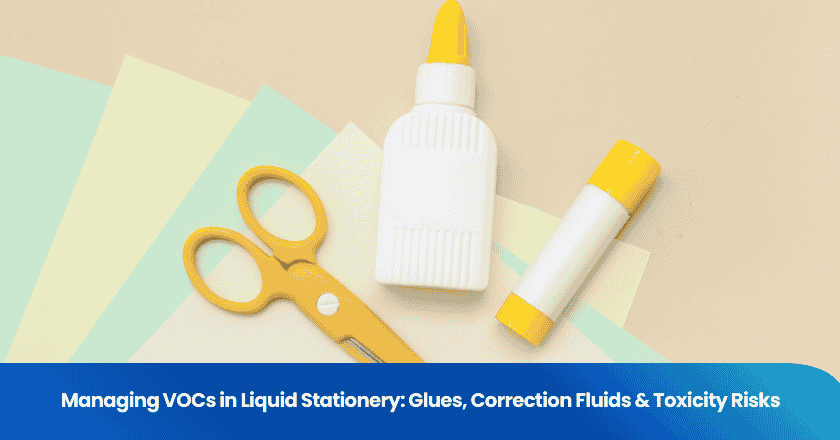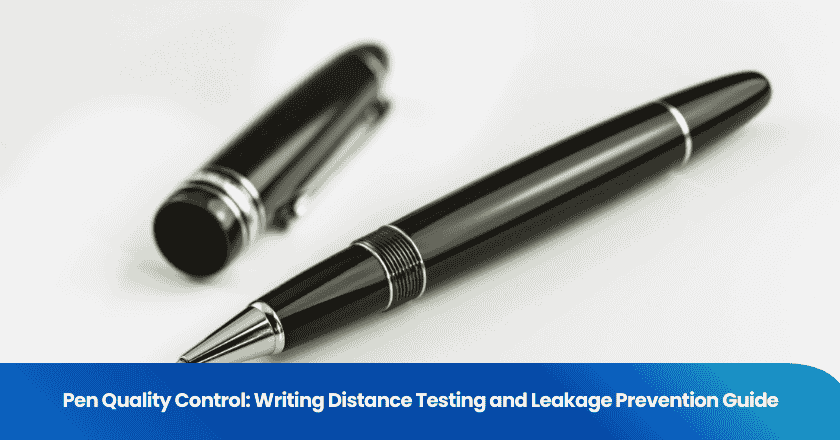
Choosing the right approach to inspection can make or break a company’s success. Many leaders ask if 3rd party inspection agencies deliver the level of quality their business demands. Quality remains at the heart of every inspection process. They must weigh their current quality control against the expertise offered by external inspection professionals. Each inspection step determines product quality, safety, and compliance. 3rd party inspection agencies often bring specialized knowledge, raising quality standards. Inspection teams from these agencies focus on quality at every stage. Inspection data from external sources can reveal new quality insights. Quality improvements follow when inspection methods match industry needs. Inspection accuracy ensures consistent quality outcomes. Inspection frequency and depth impact overall quality. Every inspection must contribute to quality goals.
When to Use 3rd Party Inspection Agencies
Common Scenarios
Many companies turn to 3rd party inspection agencies when they face complex inspection requirements. These agencies often step in when internal teams lack the expertise to meet strict safety or compliance standards. Businesses that manufacture products for international markets rely on third-party inspection to ensure product quality meets global safety and compliance requirements. Companies also use third-party services during peak production periods to maintain quality control and avoid lapses in safety. When a business introduces new products, third-party inspection helps verify product quality and safety before launch.
Decision Factors
Decision-makers evaluate several factors before choosing 3rd party inspection agencies. They consider the complexity of inspection requirements and the need for unbiased quality control. Companies assess whether their internal teams can handle evolving safety and compliance regulations. They also review the cost of third-party services against the value of improved product quality and reduced risk. The ability of third-party inspectors to adapt to changing safety standards and compliance requirements influences the final decision.
Note: Companies should always match inspection needs with the agency’s expertise in product quality, safety, and compliance.
Third-Party Pros and Cons
| Pros | Cons |
|---|---|
| Unbiased inspection results | May require additional coordination |
| Access to specialized quality control | Potential for higher costs |
| Enhanced product quality and safety | Less direct oversight |
| Improved compliance with regulations | Possible delays in reporting |
Third-party inspection agencies offer objective assessments that strengthen product quality and safety. They help companies meet compliance requirements and maintain high safety standards. However, businesses must weigh the benefits against possible challenges, such as increased costs or less direct control over inspection processes. Careful evaluation ensures that third-party inspection supports both quality and compliance goals.
Evaluating 3rd Party Inspection Agencies
Accreditation & Certifications
Third-party inspection agencies must hold recognized certifications. ISO 17020 certification demonstrates that an agency meets international inspection standards. This certification signals a commitment to quality, safety, and compliance. Companies should verify that agencies maintain up-to-date certifications. Accreditation builds trust and shows that the agency follows strict quality control procedures. Certification also ensures that the inspection process aligns with global quality standards.
Industry Expertise
Industry expertise sets leading third-party agencies apart. Agencies with deep knowledge of specific sectors understand unique product quality requirements. They know the latest safety regulations and compliance rules. Their experience helps them identify risks that others might miss. Companies should look for agencies with a proven track record in their industry. This expertise leads to more accurate inspection results and better quality control.
Global Reach
Many businesses operate across borders. Third-party inspection agencies with a global reach can support international operations. These agencies understand regional compliance standards and product quality expectations. They offer consistent inspection services in multiple countries. Global reach ensures that companies maintain quality and safety standards everywhere they do business.
Technology & Tools
Modern inspection relies on advanced technology. Leading third-party agencies use digital tools, data analytics, and automated systems. These technologies improve inspection accuracy and speed. They help agencies detect product quality issues early. Companies should ask about the technology and tools an agency uses. Innovative tools support better quality control and compliance.
Independence & Objectivity
Independence remains critical in third-party inspection. Agencies must operate without influence from project management or production teams. This independence ensures objective inspection results. Unbiased assessments protect product quality and safety. Companies should confirm that agencies have clear policies to prevent conflicts of interest. Objectivity builds trust in the inspection process.
Inspector Training
Inspector training shapes the quality of third-party inspection. Well-trained inspectors understand complex compliance requirements and safety standards. They know how to spot product quality issues quickly. Agencies should invest in ongoing training for their teams. Companies should ask about inspector qualifications and training programs. Strong training leads to better inspection outcomes and higher quality standards.
Reputation & References
Reputation matters in the inspection industry. Companies should research an agency’s reputation before making a decision. They can check references, read client testimonials, and review case studies. A strong reputation signals consistent quality, reliable safety practices, and a history of compliance. Agencies with positive references inspire trust and confidence.
Tip: Always request references from similar industries to verify the agency’s experience with your product quality and safety needs.
Service Scope
The scope of services offered by third-party inspection agencies varies. Some agencies provide comprehensive inspection, testing, and quality control. Others focus on specific stages of the production process. Companies should match their needs with the agency’s service scope. A clear understanding of services ensures that all product quality and compliance requirements receive attention.
Reporting & Transparency
Clear reporting and transparency define effective third-party inspection. Agencies should provide detailed, timely inspection reports. Transparent communication helps companies understand product quality issues and compliance risks. Reports should include actionable recommendations for improving quality and safety. Transparency builds trust and supports continuous improvement.
Cost & Value
Cost plays a role in selecting a third-party inspection agency. Companies should compare costs with the value delivered. High-quality inspection can prevent costly product quality failures and compliance violations. Value comes from accurate inspection, improved safety, and reduced risk. Companies should seek agencies that balance cost with quality and reliability.
Communication
Effective communication supports successful third-party inspection. Agencies must respond quickly to questions and provide clear updates. Open communication helps companies address product quality and safety concerns in real time. Companies should choose agencies with strong communication practices. Good communication builds trust and ensures that inspection goals align with business needs.
Red Flags
Warning Signs
Companies must watch for clear warning signs when selecting third-party inspection partners. Agencies that lack transparency in their inspection process often fail to deliver reliable quality results. Inconsistent or incomplete inspection reports signal weak quality control and poor compliance practices. Agencies that avoid sharing details about inspector training or do not provide clear documentation may not meet industry safety standards.
• Agencies that cannot explain their inspection methods may not follow best practices for quality or compliance.
• Frequent delays in inspection reporting can disrupt production schedules and threaten compliance with regulations.
• Agencies that do not update their inspection protocols to match changing compliance or safety requirements put product quality at risk.
• Poor communication during the inspection process often leads to missed quality or compliance issues.
Tip: Reliable third-party agencies always provide clear, timely inspection updates and maintain open communication about quality and compliance.
Key Questions
Decision-makers should ask targeted questions to evaluate third-party inspection agencies. These questions help uncover potential risks to quality, safety, and compliance.
1. How does the agency ensure inspection independence and objectivity?
2. What steps does the agency take to maintain up-to-date compliance with industry standards?
3. Can the agency provide examples of how it has improved product quality and safety for similar clients?
4. What technology does the agency use to enhance inspection accuracy and compliance tracking?
5. How does the agency handle changes in compliance regulations or safety requirements?
6. What training do inspectors receive to stay current with quality and safety standards?
7. How does the agency communicate inspection findings and compliance risks to clients?
Note: Consistent answers to these questions reveal the agency’s commitment to inspection quality, safety, and compliance.
Final Decision
Selection Checklist
A structured approach helps companies choose the right third-party inspection partner. Decision-makers should use a checklist to ensure every aspect of quality, compliance, and product quality receives attention. Here is a practical checklist for evaluating third-party inspection agencies:
1. Confirm the agency holds valid accreditation and certifications.
2. Review the agency’s industry expertise and experience with similar products.
3. Assess the agency’s global reach for international operations.
4. Evaluate the technology and tools used for inspection accuracy.
5. Verify the agency’s independence and objectivity in inspection processes.
6. Check inspector training programs and qualifications.
7. Investigate the agency’s reputation and request references.
8. Match the agency’s service scope with company needs.
9. Examine the clarity and transparency of inspection reporting.
10. Compare costs with the value provided in quality control and compliance.
11. Test the agency’s communication practices for timely updates.
Tip: A thorough checklist builds trust in the inspection process and supports consistent quality control.
Aligning Strengths
Companies achieve the best results when they align the strengths of a third-party inspection agency with their own quality and compliance goals. Agencies with deep knowledge of quality standards and compliance regulations help companies maintain high product quality. Strong inspection practices identify risks early and support continuous improvement. Effective quality control from third-party experts leads to better compliance outcomes and fewer product quality issues.
Decision-makers should look for agencies that demonstrate a commitment to quality, use advanced inspection technology, and maintain transparent communication. When an agency’s strengths match a company’s needs, the partnership delivers reliable inspection results and builds long-term trust. This alignment ensures that quality, compliance, and product quality remain at the forefront of every inspection.
Every company must approach inspection with a clear plan. Inspection teams need to focus on quality at every stage. Inspection accuracy leads to better quality outcomes. Inspection frequency impacts overall quality. Inspection methods should match industry needs. Inspection data can reveal new quality insights. Inspection improvements follow when quality standards guide decisions. Inspection reports must highlight quality risks. Inspection results support quality goals. Inspection success depends on quality-driven choices. Use the checklist to guide inspection decisions and keep quality at the center of every inspection process.
FAQ
What makes inspection by 3rd party inspection agencies different from internal inspection?
3rd party inspection agencies provide independent inspection. Their teams use strict inspection protocols. They focus on unbiased inspection results. Internal inspection teams may overlook some inspection steps. External inspection often leads to higher quality and better inspection accuracy.
How often should a company schedule inspection for consistent quality?
Inspection frequency depends on product type and industry standards. Many companies schedule inspection at key production stages. Regular inspection helps maintain quality. Frequent inspection can catch quality issues early. Inspection intervals should match company goals and compliance needs.
Can inspection improve product quality and reduce risk?
Inspection identifies quality risks before products reach customers. Detailed inspection reports highlight quality problems. Inspection teams recommend solutions. Consistent inspection reduces the chance of defects. Inspection supports safer products and fewer recalls. Quality improves when inspection becomes routine.
What should a company expect in an inspection report?
An inspection report includes inspection findings, quality issues, and compliance status. The report lists inspection steps and results. Inspection teams provide recommendations for quality improvement. Clear inspection reports help companies track inspection progress and address quality concerns.
Grow your business with TradeAider Service
Click the button below to directly enter the TradeAider Service System. The simple steps from booking and payment to receiving reports are easy to operate.



